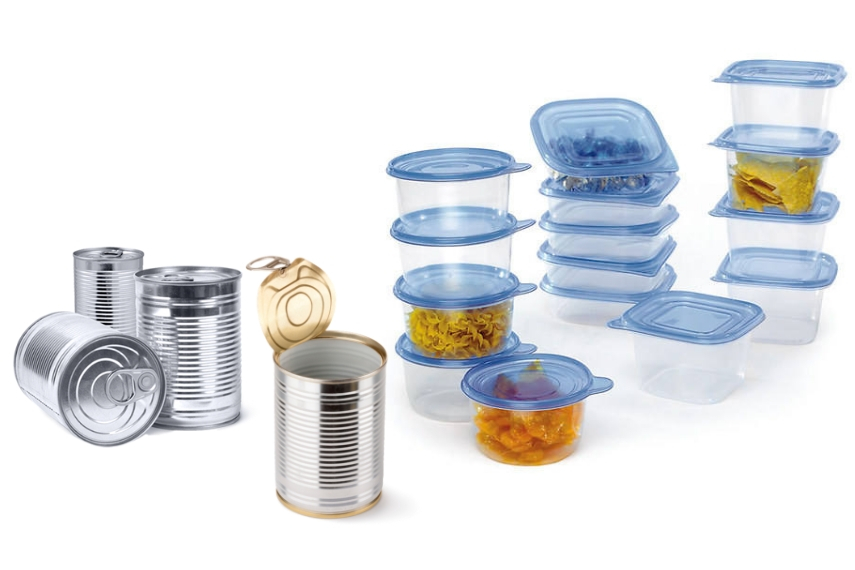Food Packaging Additives & Child Health – Guidelines from the AAP
The American Academy of Pediatrics have started warning doctors about chemicals leaching into food from food packaging. In their policy statement Food Additives and Child Health (August 2018), they discuss both intentional food additives, as well as indirect food additives. Indirect food additives are “substances in food contact materials”. They include these because the substances that make up food packaging (including adhesives, dyes, coatings, paper, paperboard, plastic, and other polymers) may contaminate food as part of the packaging or manufacturing process. This is significant—doctors have serious concerns that materials touching our food can leach chemicals into the food itself, and that these chemicals can be harmful to children.
Critical Weaknesses in Regulating Food Additives
The policy statement has a couple of goals. It provides recommendations to pediatricians on offering guidance their patients’ families. It also proposes urgently needed reforms to the FDA’s current regulatory process for food additives. Many consumers still assume that if product is allowed to be sold, it must have been vetted and it is safe. However, according to the Academy:
- “Regulation and oversight of many food additives is inadequate.”
- “Current requirements for a ‘generally recognized as safe’ (GRAS) designation are insufficient to ensure the safety of food additives”
- The requirements “do not contain sufficient protections against conflict of interest.” (Implying that the industries producing packaging and packaging additives can have undue influence on regulations.)
- “The FDA does not have adequate authority to acquire data on chemicals on the market or reassess their safety for human health.”
The AAP says these are critical weaknesses.
Substantial Improvements are Needed
The AAP says, “substantial improvements to the food additives regulatory system are urgently needed.” This includes:
- “Greatly strengthening or replacing the “generally recognized as safe” (GRAS) determination process.”
- “Updating the scientific foundation of the FDA’s safety assessment program.”
- “Retesting all previously approved chemicals.”
- “Labeling direct additives with limited or no toxicity data.”
Infants and Children are More Vulnerable to Chemical Exposures
The academy tells us of accumulating evidence (from nonhuman laboratory and human epidemiological studies) is that “chemicals used in food and food contact materials may contribute to disease and disability”. They explain that children may be particularly susceptible to the effects of these compounds, because:
- “They have higher relative exposures compared with adults (because of greater dietary intake per pound).”
- “Their metabolic (ie, detoxification) systems are still developing.”
- “Key organ systems are undergoing substantial changes and maturation that are vulnerable to disruptions.”
At Sprout, we always explain that what our children come into contact with matters more than it does for us. Pound for pound everything affects them more because every exposure is a greater percentage of their bodyweight, and their systems are still developing.
Chemicals in Food Packaging of Increasing Concern
The AAP is greatly concerned with the potential for endocrine system disruption. This is particularly concerning in early life when developmental programming of organ systems is susceptible to permanent and lifelong disruption. The chemicals of increasing concern include:
- Bisphenols (e.g. BPA, BPS, etc.) – often used in the lining of metal cans to prevent corrosion.
- Phthalates – often used in adhesives, lubricants, and plasticizers.
- Perfluoroalkyl Chemicals (PFCs) – used in grease-proof paper and packaging.
- Perchlorate – an antistatic agent used for plastic packaging in contact with dry foods with surfaces that do not contain free fat or oil.
What Can You Do? The AAP’s Recommendations
The AAP acknowledges that it is difficult to know how to reduce exposures to many of these chemicals, and that making the recommended changes could be particularly difficult on low-income families. They recommend pediatricians offer the following guidance to families:
- Prioritize eating fresh or frozen fruits and vegetables when possible.
- Avoid processed meats, especially during pregnancy.
- Wash hands before touch food and drinks.
- Wash all fruits and vegetables that cannot be peeled.
Food Packaging Guidelines
- Avoid using plastic if microwaving food or beverages (including infant formula and pumped human milk).
- Avoid using the dishwasher for plastics.
- Use alternatives to plastic when possible, like glass or stainless steel.
- Look at the recycling code on the bottom of products to find the plastic type, and avoid plastics with recycling codes 3 (phthalates), 6 (styrene), and 7 (bisphenols) unless plastics are labeled as “biobased” or “greenware,” indicating that they are made from corn and do not contain bisphenols.
AAP’s Summary of Food-Related Uses and Health Concerns for the Compounds Discussed in the Statement

Source
http://pediatrics.aappublications.org/content/142/2/e20181408
Related Articles
An Alphabet of Bisphenols – BPA-Free, but BPS, BPF, BPZ, and more still included…
Healthy Baby Guide to Bottles & Food Storage
Why BPA-Free Products Aren’t Any Better
BPA: Not Just in Baby Bottles
The Problem with Plastics
A Discussion on Endocrine Disruptors from a Pediatric Endocrinologist
I am Pregnant! Now What Should I Change?
Healthy Baby Guide Glossary


